The global sodium silicate market is expected to grow from USD 6.46 billion in 2019 to USD 8.85 billion by 2027, at a CAGR of 3.98% during the forecast period from 2020-2027. Sodium silicates are used in the textile industry with soaps, wetting agents, bleaches, and synthetic detergents, in operations, such as kier boiling, cleaning & finishing, wool scouring, bleaching, and degumming.
In addition to this, sodium silicate solutions have been used as ingredients in the drying process of the manufacturing of detergent powder for many years. Rising disposable incomes and changing consumer preference are pushing the growth of detergents and cleaning agents market, resulting in the growth of sodium silicate market.
Sodium silicate used as an additive enables to maintain effective pH level during cleaning operations, boosts the effectiveness of soaps and surfactants and detergency of cleaning products. However, health hazards and fluctuating raw material prices are some of the factors anticipated to hinder the market growth over the forecast period.
The market has been segmented on the basis of type, application, and region. The type segment includes sodium metasilicate and sodium silicate. Sodium silicate segment held largest market share of 61.45% and valued at USD 3.94 billion in 2019. Sodium silicate is also the technical and common name for a mixture of such compounds, chiefly the metasilicate, also called water glass, water glass, or liquid glass. The product has a wide variety of uses, including the formulation of cements, passive fire protection, textile and lumber processing, manufacture of refractory ceramics, as adhesives, and in the production of silica gel.
The application segment includes surface coatings, adhesive, detergent and others. Detergent segment held the largest market share of 39.64% in 2019. The food and beverage processing requires the sodium silicate for the cooling process. Detergents are used in cleaning household surfaces, dishes and washing laundry. Sodium silicate is a building agent used in many commercial detergents. The purpose of the sodium silicate to be prevent mineral deposits on surfaces after washing by removing water hardness.
The market has been divided into North America, Europe, Asia-Pacific, South America and Middle East and Africa. Asia-Pacific held the largest market share of 44.70% in 2019. The rise in production of specialty silica in various countries of Asia Pacific region is driving the growth sodium silicate market.
Key players in the Sodium silicate market are PQ Corporation, PPG Industries, Inc., W. R. Grace & Co., Nippon Chemical Industrial Co., Ltd., Tokuyama Corporation, Evonik Industries AG, BASF SE, and Oriental Silicas Corporation. Developing and developed countries are offering greater opportunities and major players are continuously focused on new developments, strategic partnerships, acquisitions and venture capital investments to obtain high growth in the market. In May 2018, PQ Corporation and Brenntag Group, the global market leader in chemical distribution, announced that Brenntag is distributing PQ’s sodium and potassium silicate solutions in France.
This study forecasts revenue growth at global, regional, and country levels from 2014 to 2027. Fior Markets has segmented the on the basis of below mentioned segments:
Chapter 1 Introduction 22
1.1 Research Methodology 22
1.2 FMR desk research 23
1.2.1 FMR data synthesis 24
1.2.2 Data validation and market feedback 24
1.2.3 FMR data sources 25
Chapter 2 Executive Summary 27
2.1 World Market Overview 27
2.1.1 Global Sodium Silicate Consumption 2014-2027 29
2.1.2 Sodium Silicate Consumption CAGR by Region 31
2.2 Sodium Silicate Consumption Segment by Type 33
2.2.1 Sodium Metasilicate 33
2.2.2 Sodium Silicate 34
2.3 Sodium Silicate Consumption by Type 35
2.3.1 Global Sodium Silicate Consumption Market Share by Type (2014-2019) 35
2.3.2 Global Sodium Silicate Consumption Revenue Market Share by Type (2014-2019) 37
2.3.3 Global Sodium Silicate Consumption Price by Type (2014-2019) 39
2.4 Sodium Silicate Consumption Segment by Application 40
2.4.1 Surface Coatings 40
2.4.2 Adhesive 42
2.4.3 Detergent 44
2.4.4 Others 45
2.5 Sodium Silicate Consumption by Application 47
2.5.1 Global Sodium Silicate Consumption Market Share by Application (2014-2019) 47
2.5.2 Global Sodium Silicate Consumption Revenue Market Share by Application (2014-2019) 50
Chapter 3 Global Sodium Silicate Consumption by Company 53
3.1 Global Sodium Silicate Consumption Market Share by Company 53
3.1.1 Global Sodium Silicate Consumption by Company (2017-2019) 53
3.1.2 Sodium Silicate Consumption Market Share by Manufacturers 54
3.2 Global Sodium Silicate Consumption Revenue Market Share by Company 56
3.2.1 Global Sodium Silicate Consumption Revenue by Manufacturers 56
3.2.2 Sodium Silicate Consumption Revenue Market Share by Manufacturers 57
3.3 Global Sodium Silicate Consumption Price by Manufacturers 59
3.4 Sodium Silicate Consumption Manufacturers Manufacturing Base Distribution, Headquarters 60
3.4.1 Key Manufacturers Sodium Silicate Consumption Product Location Distribution 60
3.5 Manufacturers Mergers & Acquisitions, Expansion Plans 61
Chapter 4 Sodium Silicate Consumption by Region 63
4.1 Sodium Silicate Consumption by Region 63
4.1.1 Global Sodium Silicate Consumption Market Share by Region (2014-2019) 63
4.1.2 Global Sodium Silicate Consumption Revenue Market Share by Region (2014-2019) 65
4.2 North Americas Sodium Silicate Consumption Growth 67
4.3 APAC Sodium Silicate Consumption Growth 69
4.4 Europe Sodium Silicate Consumption Growth 71
4.5 Central & South America Sodium Silicate Consumption Growth 73
4.6 Middle East & Africa Sodium Silicate Consumption Growth 75
Chapter 5 North America 77
5.1 North America Sodium Silicate Consumption by Countries 77
5.1.1 North America Sodium Silicate Consumption by Countries 77
5.1.2 North America Sodium Silicate Consumption Revenue by Countries 79
5.2 North America Sodium Silicate Consumption by Type 81
5.2.1 North America Sodium Silicate Consumption by Type 81
5.3 North America Sodium Silicate Consumption by Application 83
5.3.1 North America Sodium Silicate Consumption by Application 83
5.4 United States 85
5.5 Canada 87
5.6 Mexico 89
Chapter 6 Central & South America 91
6.1 South America Sodium Silicate Consumption by Countries 91
6.1.1 South America Sodium Silicate Consumption by Countries 91
6.1.2 South America Sodium Silicate Consumption Revenue by Countries 93
6.2 South America Sodium Silicate Consumption by Type 95
6.2.1 South America Sodium Silicate Consumption by Type 95
6.3 South America Sodium Silicate Consumption by Application 97
6.3.1 South America Sodium Silicate Consumption by Application 97
6.4 Brazil 100
6.5 Rest of SA 102
Chapter 7 APAC 104
7.1 APAC Sodium Silicate Consumption by Countries 104
7.1.1 APAC Sodium Silicate Consumption by Countries 104
7.1.2 APAC Sodium Silicate Consumption Revenue by Countries 107
7.2 APAC Sodium Silicate Consumption by Type 110
7.2.1 APAC Sodium Silicate Consumption by Type 110
7.3 APAC Sodium Silicate Consumption by Application 112
7.3.1 APAC Sodium Silicate Consumption by Application 112
7.4 China 114
7.5 Japan 116
7.6 Korea 118
7.7 Southeast Asia 120
7.8 India 122
7.9 Australia 124
7.10 Pakistan 126
Chapter 8 Europe 128
8.1 Europe Sodium Silicate Consumption by Countries 128
8.1.1 Europe Sodium Silicate Consumption by Countries 128
8.1.2 Europe Sodium Silicate Consumption Revenue by Countries 130
8.2 Europe Sodium Silicate Consumption by Type 132
8.2.1 Europe Sodium Silicate Consumption by Type 132
8.3 Europe Sodium Silicate Consumption by Application 134
8.3.1 Europe Sodium Silicate Consumption by Application 134
8.4 Germany 136
8.5 France 138
8.6 UK 140
8.7 Italy 142
8.8 Russia 144
Chapter 9 Middle East & Africa 146
9.1 Middle East & Africa Sodium Silicate Consumption by Countries 146
9.1.1 Middle East & Africa Sodium Silicate Consumption by Countries 146
9.1.2 Middle East & Africa Sodium Silicate Consumption Revenue by Countries 149
9.2 Middle East & Africa Sodium Silicate Consumption by Type 151
9.2.1 Middle East & Africa Sodium Silicate Consumption by Type 151
9.3 Middle East & Africa Sodium Silicate Consumption by Application 153
9.3.1 Middle East & Africa Sodium Silicate Consumption by Application 153
9.4 Egypt 156
9.5 South Africa 158
9.6 Israel 160
9.7 GCC Countries 162
Chapter 10 Market Drivers, Challenges and Trends 164
10.1 Market Drivers and Impact 164
10.1.1 Growing Demand from Key Regions 164
10.1.2 Growing Demand from Key Applications and Potential Industries 165
10.2 Market Challenges and Impact 166
10.3 Market Trends 166
Chapter 11 Marketing, Distributors and Customer 167
11.1 Marketing Channel 167
11.1.1 Direct Marketing 168
11.1.2 Indirect Marketing 170
11.1 Market Positioning 170
11.1.1 Marketing Channel Future Trend 171
11.1.2 Pricing Strategy 172
11.1.3 Brand Strategy 174
11.2 Distributors/Traders List 176
Chapter 12 Global Sodium Silicate Consumption Market Forecast 177
12.1 Global Sodium Silicate Consumption Forecast (2019-2027) 177
12.2 Global Sodium Silicate Consumption Forecast by Region 179
12.2.1 Global Sodium Silicate Consumption Forecast Market Share by Region (2019-2027) 179
12.2.2 Global Sodium Silicate Consumption Revenue Forecast Market Share by Region (2019-2027) 180
12.2.3 North Americas Consumption Forecast 181
12.2.4 APAC Consumption Forecast 183
12.2.5 Europe Consumption Forecast 185
12.2.6 Central & South America Consumption Forecast 187
12.2.7 Middle East & Africa Consumption Forecast 189
12.3 Americas Forecast by Country 191
12.3.1 United States Market Forecast 191
12.3.2 Canada Market Forecast 193
12.3.3 Mexico Market Forecast 195
12.4 Central & South America 197
12.4.1 Brazil Market Forecast 197
12.4.2 Rest of SA Market Forecast 199
12.5 APAC Forecast by Country 201
12.5.1 China Market Forecast 201
12.5.2 Japan Market Forecast 203
12.5.3 Korea Market Forecast 205
12.5.4 Southeast Asia Market Forecast 207
12.5.5 India Market Forecast 209
12.5.6 Australia Market Forecast 211
12.5.7 Pakistan Market Forecast 213
12.6 Europe Forecast by Country 215
12.6.1 Germany Market Forecast 215
12.6.2 France Market Forecast 217
12.6.3 UK Market Forecast 219
12.6.4 Italy Market Forecast 221
12.6.5 Russia Market Forecast 223
12.7 Middle East & Africa Forecast by Country 225
12.7.1 Egypt Market Forecast 225
12.7.2 South Africa Market Forecast 227
12.7.3 Israel Market Forecast 229
12.7.4 GCC Countries Market Forecast 231
12.8 Global Sodium Silicate Consumption Forecast by Type 233
12.8.1 Global Sodium Silicate Consumption Forecast Market Share by Type (2019-2027) 233
12.8.2 Global Sodium Silicate Consumption Revenue Forecast Market Share by Type (2019-2027) 234
12.9 Global Sodium Silicate Consumption Forecast by Application 235
12.9.1 Global Sodium Silicate Consumption Forecast Market Share by Application (2019-2027) 235
12.9.2 Global Sodium Silicate Consumption Revenue Forecast Market Share by Application (2019-2027) 237
Chapter 13 Key Players Analysis 238
13.1 PQ Corporation 238
13.1.1 Company Basic Information, Manufacturing Base, Sales Area and Its Competitors 238
13.1.2 Sodium Silicate Product Category, End Uses and Specification of PQ Corporation 240
13.1.3 PQ Corporation Sodium Silicate Sales, Revenue, Price, Gross Margin and Market Share (2013-2018) 241
13.1.4 Main Business/Business Overview 241
13.1.5 Recent Development 241
13.2 PPG Industries, Inc. 242
13.2.1 Company Basic Information, Manufacturing Base, Sales Area and Its Competitors 242
13.2.2 Sodium Silicate Product Category, End Uses and Specification of PPG Industries, Inc. 243
13.2.3 PPG Industries, Inc. Sodium Silicate Sales, Revenue, Price, Gross Margin and Market Share (2013-2018) 244
13.2.4 Main Business/Business Overview 245
13.2.5 Recent Development 245
13.3 W. R. Grace & Co. 246
13.3.1 Company Basic Information, Manufacturing Base, Sales Area and Its Competitors 246
13.3.2 Sodium Silicate Product Category, End Uses and Specification of W. R. Grace & Co. 247
13.3.3 Main Business/Business Overview 247
13.3.4 Recent Development 248
13.4 Nippon Chemical Industrial Co., Ltd. 249
13.4.1 Company Basic Information, Manufacturing Base, Sales Area and Its Competitors 249
13.4.2 Sodium Silicate Product Category, End Uses and Specification of Nippon Chemical Industrial Co., Ltd. 250
13.4.3 Nippon Chemical Industrial Co., Ltd. Sodium Silicate Sales, Revenue, Price, Gross Margin and Market Share (2013-2018) 251
13.4.4 Main Business/Business Overview 251
13.4.5 Recent Development 252
13.5 Tokuyama Corporation 253
13.5.1 Company Basic Information, Manufacturing Base, Sales Area and Its Competitors 253
13.5.2 Sodium Silicate Product Category, End Uses and Specification of Tokuyama Corporation 254
13.5.3 Tokuyama Corporation Sodium Silicate Sales, Revenue, Price, Gross Margin and Market Share (2013-2018) 255
13.5.4 Main Business/Business Overview 255
13.6 Evonik Industries AG 257
13.6.1 Company Basic Information, Manufacturing Base, Sales Area and Its Competitors 257
13.6.2 Sodium Silicate Product Category, End Uses and Specification of Evonik Industries AG 258
13.6.3 Evonik Industries AG Sodium Silicate Sales, Revenue, Price, Gross Margin and Market Share (2013-2018) 259
13.6.4 Main Business/Business Overview 259
13.6.5 Recent Development 260
13.7 BASF SE 261
13.7.1 Company Basic Information, Manufacturing Base, Sales Area and Its Competitors 261
13.7.2 Sodium Silicate Product Category, End Uses and Specification of BASF SE 262
13.7.3 BASF SE Sodium Silicate Sales, Revenue, Price, Gross Margin and Market Share (2013-2018) 262
13.7.4 Main Business/Business Overview 263
13.8 Oriental Silicas Corporation 264
13.8.1 Company Basic Information, Manufacturing Base, Sales Area and Its Competitors 264
13.8.2 Sodium Silicate Product Category, End Uses and Specification of Oriental Silicas Corporation 265
13.8.3 Main Business/Business Overview 265
Chapter 14 Research Findings and Conclusion 266
List of Figures
FIG. 1 Product Picture of Global Sodium Silicate Consumption 28
FIG. 2 Global Sodium Silicate Consumption Growth Rate 2014-2027 (Kilo Tons) 29
FIG. 3 Global Sodium Silicate Consumption Value Growth Rate 2014-2027 (USD millions) 30
FIG. 4 Global Sodium Silicate Consumption by Region 2019- 2027 (USD millions) 32
FIG. 5 Global Sodium Silicate Consumption Market Share by Type in 2018 36
FIG. 6 Global Sodium Silicate Consumption Revenue Market Share by Type 2018 38
FIG. 7 Global Sodium Silicate Consumption Market: Surface Coatings (2014-2019) (Kilo Tons) 41
FIG. 8 Global Sodium Silicate Consumption Market: Adhesive (2014-2019) (Kilo Tons) 43
FIG. 9 Global Sodium Silicate Consumption Market: Detergent (2014-2019) (Kilo Tons) 44
FIG. 10 Global Sodium Silicate Consumption Market: Other Industry (2014-2019) (Kilo Tons) 46
FIG. 11 Global Sodium Silicate Consumption Market Share by Application in 2018 49
FIG. 12 Global Sodium Silicate Consumption Revenue Market Share by Application (2014-2019) 52
FIG. 13 Global Sodium Silicate Consumption Share by Manufacturers in 2018 55
FIG. 14 Global Sodium Silicate Consumption Revenue Share by Manufacturers in 2018 58
FIG. 15 Global Sodium Silicate Consumption Market Share by Region in 2018 64
FIG. 16 Global Sodium Silicate Consumption Revenue Market Share by Region (2014-2019) 66
FIG. 17 North America Sodium Silicate Consumption Growth Rate 2014-2019 (Kilo Tons) 67
FIG. 18 North America Sodium Silicate Consumption Revenue Growth Rate 2014-2019 (Million USD) 68
FIG. 19 APAC Sodium Silicate Consumption Growth Rate 2014-2019 (Kilo Tons) 69
FIG. 20 APAC Sodium Silicate Consumption Revenue Growth Rate 2014-2019 (Million USD) 70
FIG. 21 Europe Sodium Silicate Consumption Growth Rate 2014-2019 (Kilo Tons) 71
FIG. 22 Europe Sodium Silicate Consumption Revenue Growth Rate 2014-2019 (Million USD) 72
FIG. 23 Central & South America Sodium Silicate Consumption Growth Rate 2014-2019 (Kilo Tons) 73
FIG. 24 Central & South America Sodium Silicate Consumption Revenue Growth Rate 2014-2019 (Million USD) 74
FIG. 25 Middle East & Africa Sodium Silicate Consumption Growth Rate 2014-2019 (Kilo Tons) 75
FIG. 26 Middle East & Africa Sodium Silicate Consumption Revenue Growth Rate 2014-2019 (Million USD) 76
FIG. 27 North America Sodium Silicate Consumption Market Share by Countries in 2018 78
FIG. 28 North America Sodium Silicate Consumption Revenue Market Share by Countries in 2018 80
FIG. 29 North America Sodium Silicate Consumption Market Share by Type in 2018 82
FIG. 30 North America Sodium Silicate Consumption Market Share by Application in 2018 84
FIG. 31 United States Sodium Silicate Consumption Growth Rate (2014-2019) (Kilo Tons) 85
FIG. 32 United States Sodium Silicate Consumption Revenue Growth Rate (2014-2019) (USD Million) 86
FIG. 33 Canada Sodium Silicate Consumption Growth Rate (2014-2019) (Kilo Tons) 87
FIG. 34 Canada Sodium Silicate Consumption Revenue Growth Rate (2014-2019) (USD Million) 88
FIG. 35 Mexico Sodium Silicate Consumption Growth Rate (2014-2019) (Kilo Tons) 89
FIG. 36 Mexico Sodium Silicate Consumption Revenue Growth Rate (2014-2019) (USD Million) 90
FIG. 37 South America Sodium Silicate Consumption Market Share by Countries in 2018 92
FIG. 38 South America Sodium Silicate Consumption Revenue Market Share by Countries in 2018 94
FIG. 39 South America Sodium Silicate Consumption Market Share by Type in 2018 96
FIG. 40 South America Sodium Silicate Consumption Market Share by Application in 2018 99
FIG. 41 Brazil Sodium Silicate Consumption Growth Rate (2014-2019) (Kilo Tons) 100
FIG. 42 Brazil Sodium Silicate Consumption Revenue Growth Rate (2014-2019) (USD Million) 101
FIG. 43 Rest of SA Sodium Silicate Consumption Growth Rate (2014-2019) (Kilo Tons) 102
FIG. 44 Rest of SA Sodium Silicate Consumption Revenue Growth Rate (2014-2019) (USD Million) 103
FIG. 45 APAC Sodium Silicate Consumption Market Share by Countries in 2018 106
FIG. 46 APAC Sodium Silicate Consumption Revenue Market Share by Countries in 2018 109
FIG. 47 APAC Sodium Silicate Consumption Market Share by Type in 2018 111
FIG. 48 APAC Sodium Silicate Consumption Market Share by Application in 2018 113
FIG. 49 China Sodium Silicate Consumption Growth Rate (2014-2019) (Kilo Tons) 114
FIG. 50 China Sodium Silicate Consumption Revenue Growth Rate (2014-2019) (USD Million) 115
FIG. 51 Japan Sodium Silicate Consumption Growth Rate (2014-2019) (Kilo Tons) 116
FIG. 52 Japan Sodium Silicate Consumption Revenue Growth Rate (2014-2019) (USD Million) 117
FIG. 53 Korea Sodium Silicate Consumption Growth Rate (2014-2019) (Kilo Tons) 118
FIG. 54 Korea Sodium Silicate Consumption Revenue Growth Rate (2014-2019) (USD Million) 119
FIG. 55 Southeast Asia Sodium Silicate Consumption Growth Rate (2014-2019) (Kilo Tons) 120
FIG. 56 Southeast Asia Sodium Silicate Consumption Revenue Growth Rate (2014-2019) (USD Million) 121
FIG. 57 India Sodium Silicate Consumption Growth Rate (2014-2019) (Kilo Tons) 122
FIG. 58 India Sodium Silicate Consumption Revenue Growth Rate (2014-2019) (USD Million) 123
FIG. 59 Australia Sodium Silicate Consumption Growth Rate (2014-2019) (Kilo Tons) 124
FIG. 60 Australia Asia Sodium Silicate Consumption Revenue Growth Rate (2014-2019) (USD Million) 125
FIG. 61 Pakistan Sodium Silicate Consumption Growth Rate (2014-2019) (Kilo Tons) 126
FIG. 62 Pakistan Asia Sodium Silicate Consumption Revenue Growth Rate (2014-2019) (USD Million) 127
FIG. 63 Europe Sodium Silicate Consumption Market Share by Countries in 2018 129
FIG. 64 Europe Sodium Silicate Consumption Revenue Market Share by Countries in 2018 131
FIG. 65 Europe Sodium Silicate Consumption Market Share by Type in 2018 133
FIG. 66 Europe Sodium Silicate Consumption Market Share by Application in 2018 135
FIG. 67 Germany Sodium Silicate Consumption Growth Rate (2014-2019) (Kilo Tons) 136
FIG. 68 Germany Sodium Silicate Consumption Revenue Growth Rate (2014-2019) (USD Million) 137
FIG. 69 France Sodium Silicate Consumption Growth Rate (2014-2019) (Kilo Tons) 138
FIG. 70 France Sodium Silicate Consumption Revenue Growth Rate (2014-2019) (USD Million) 139
FIG. 71 UK Sodium Silicate Consumption Growth Rate (2014-2019) (Kilo Tons) 140
FIG. 72 UK Sodium Silicate Consumption Revenue Growth Rate (2014-2019) (USD Million) 141
FIG. 73 Italy Sodium Silicate Consumption Growth Rate (2014-2019) (Kilo Tons) 142
FIG. 74 Italy Sodium Silicate Consumption Revenue Growth Rate (2014-2019) (USD Million) 143
FIG. 75 Russia Sodium Silicate Consumption Growth Rate (2014-2019) (Kilo Tons) 144
FIG. 76 Russia Sodium Silicate Consumption Revenue Growth Rate (2014-2019) (USD Million) 145
FIG. 77 Middle East & Africa Sodium Silicate Consumption Market Share by Countries in 2018 148
FIG. 78 Middle East & Africa Sodium Silicate Consumption Revenue Market Share by Countries in 2018 150
FIG. 79 Middle East & Africa Sodium Silicate Consumption Market Share by Type in 2018 152
FIG. 80 Middle East & Africa Sodium Silicate Consumption Market Share by Application in 2018 155
FIG. 81 Egypt Sodium Silicate Consumption Growth Rate (2014-2019) (Kilo Tons) 156
FIG. 82 Egypt Sodium Silicate Consumption Revenue Growth Rate (2014-2019) (USD Million) 157
FIG. 83 South Africa Sodium Silicate Consumption Growth Rate (2014-2019) (Kilo Tons) 158
FIG. 84 South Africa Sodium Silicate Consumption Revenue Growth Rate (2014-2019) (USD Million) 159
FIG. 85 Israel Sodium Silicate Consumption Growth Rate (2014-2019) (Kilo Tons) 160
FIG. 86 Israel Sodium Silicate Consumption Revenue Growth Rate (2014-2019) (USD Million) 161
FIG. 87 GCC Countries Sodium Silicate Consumption Growth Rate (2014-2019) (Kilo Tons) 162
FIG. 88 GCC Countries Sodium Silicate Consumption Revenue Growth Rate (2014-2019) (USD Million) 163
FIG. 89 Marketing Channels 167
FIG. 90 Direct Marketing 169
FIG. 91 Indirect Marketing 170
FIG. 92 Marketing Channel 172
FIG. 93 Pricing Strategy 174
FIG. 94 Brand Strategy 175
FIG. 95 Global Sodium Silicate Consumption Growth Rate Forecast (2019-2027) (Kilo Tons) 177
FIG. 96 Global Sodium Silicate Consumption Value Growth Rate Forecast (2019-2027) (USD Million) 178
FIG. 97 North Americas Sodium Silicate Consumption Forecast 2019-2027 (Kilo Tons)) 181
FIG. 98 North Americas Sodium Silicate Consumption Value Forecast 2019-2027 (USD millions) 182
FIG. 99 APAC Sodium Silicate Consumption Forecast 2019-2027 (Kilo Tons) 183
FIG. 100 APAC Sodium Silicate Consumption Value Forecast 2019-2027 (USD millions) 184
FIG. 101 Europe Sodium Silicate Consumption Forecast 2019-2027 (Kilo Tons) 185
FIG. 102 Europe Sodium Silicate Consumption Value Forecast 2019-2027 (USD millions) 186
FIG. 103 Central & South America Sodium Silicate Consumption Forecast 2019-2027 (Kilo Tons) 187
FIG. 104 Central & South America Sodium Silicate Consumption Value Forecast 2019-2027 (USD millions) 188
FIG. 105 Middle East & Africa Sodium Silicate Consumption Forecast 2019-2027 (Kilo Tons)) 189
FIG. 106 Middle East & Africa Sodium Silicate Consumption Value Forecast 2019-2027 (USD millions) 190
FIG. 107 United States Sodium Silicate Consumption Forecast 2019-2027 (Kilo Tons)) 191
FIG. 108 United States Sodium Silicate Consumption Value Forecast 2019-2027 (USD millions) 192
FIG. 109 Canada Sodium Silicate Consumption Forecast 2019-2027 (Kilo Tons)) 193
FIG. 110 Canada Sodium Silicate Consumption Value Forecast 2019-2027 (USD millions) 194
FIG. 111 Mexico Sodium Silicate Consumption Forecast 2019-2027 (Kilo Tons)) 195
FIG. 112 Mexico Sodium Silicate Consumption Value Forecast 2019-2027 (USD millions) 196
FIG. 113 Brazil Sodium Silicate Consumption Forecast 2019-2027 (Kilo Tons)) 197
FIG. 114 Brazil Sodium Silicate Consumption Value Forecast 2019-2027 (USD millions) 198
FIG. 115 Rest of SA Sodium Silicate Consumption Forecast 2019-2027 (Kilo Tons) 199
FIG. 116 Rest of SA Sodium Silicate Consumption Value Forecast 2019-2027 (USD millions) 200
FIG. 117 China Sodium Silicate Consumption Forecast 2019-2027 (Kilo Tons) 201
FIG. 118 China Sodium Silicate Consumption Value Forecast 2019-2027 (USD millions) 202
FIG. 119 Japan Sodium Silicate Consumption Forecast 2019-2027 (Kilo Tons) 203
FIG. 120 Japan Sodium Silicate Consumption Value Forecast 2019-2027 (USD millions) 204
FIG. 121 Korea Sodium Silicate Consumption Forecast 2019-2027 (Kilo Tons) 205
FIG. 122 Korea Sodium Silicate Consumption Value Forecast 2019-2027 (USD millions) 206
FIG. 123 Southeast Asia Sodium Silicate Consumption Forecast 2019-2027 (Kilo Tons) 207
FIG. 124 Southeast Asia Sodium Silicate Consumption Value Forecast 2019-2027 (USD millions) 208
FIG. 125 India Sodium Silicate Consumption Forecast 2019-2027 (Kilo Tons) 209
FIG. 126 India Sodium Silicate Consumption Value Forecast 2019-2027 (USD millions) 210
FIG. 127 Australia Sodium Silicate Consumption Forecast 2019-2027 (Kilo Tons) 211
FIG. 128 Australia Sodium Silicate Consumption Value Forecast 2019-2027 (USD millions) 212
FIG. 129 Pakistan Sodium Silicate Consumption Forecast 2019-2027 (Kilo Tons) 213
FIG. 130 Pakistan Sodium Silicate Consumption Value Forecast 2019-2027 (USD millions) 214
FIG. 131 Germany Sodium Silicate Consumption Forecast 2019-2027 (Kilo Tons) 215
FIG. 132 Germany Sodium Silicate Consumption Value Forecast 2019-2027 (USD millions) 216
FIG. 133 France Sodium Silicate Consumption Forecast 2019-2027 (Kilo Tons) 217
FIG. 134 France Sodium Silicate Consumption Value Forecast 2019-2027 (USD millions) 218
FIG. 135 UK Sodium Silicate Consumption Forecast 2019-2027 (Kilo Tons) 219
FIG. 136 UK Sodium Silicate Consumption Value Forecast 2019-2027 (USD millions) 220
FIG. 137 Italy Sodium Silicate Consumption Forecast 2019-2027 (Kilo Tons) 221
FIG. 138 Italy Sodium Silicate Consumption Value Forecast 2019-2027 (USD millions) 222
FIG. 139 Russia Sodium Silicate Consumption Forecast 2019-2027 (Kilo Tons) 223
FIG. 140 Russia Sodium Silicate Consumption Value Forecast 2019-2027 (USD millions) 224
FIG. 141 Egypt Sodium Silicate Consumption Forecast 2019-2027 (Kilo Tons) 225
FIG. 142 Egypt Sodium Silicate Consumption Value Forecast 2019-2027 (USD millions) 226
FIG. 143 South Africa Sodium Silicate Consumption Forecast 2019-2027 (Kilo Tons) 227
FIG. 144 South Africa Sodium Silicate Consumption Value Forecast 2019-2027 (USD millions) 228
FIG. 145 Israel Sodium Silicate Consumption Forecast 2019-2027 (Kilo Tons) 229
FIG. 146 Israel Sodium Silicate Consumption Value Forecast 2019-2027 (USD millions) 230
FIG. 147 GCC Countries Sodium Silicate Consumption Forecast 2019-2027 (Kilo Tons) 231
FIG. 148 GCC Countries Sodium Silicate Consumption Value Forecast 2019-2027 (USD millions) 232
List of Tables
TABLE 1 Global Sodium Silicate Consumption CAGR by Region 2014-2027 (USD millions) 31
TABLE 2 Global Sodium Silicate Consumption by Type (2014-2019) 35
TABLE 3 Global Sodium Silicate Consumption Market Share by Type (2014-2019) 35
TABLE 4 Global Sodium Silicate Consumption Revenue by Type (2014-2019) 37
TABLE 5 Global Sodium Silicate Consumption Revenue Market Share by Type (2014-2019) 37
TABLE 6 Global Sodium Silicate Consumption Price by Type (2014-2019) 39
TABLE 7 Global Sodium Silicate Consumption by Application (2014-2019) 47
TABLE 8 Global Sodium Silicate Consumption Market Share by Application (2014-2019) 48
TABLE 9 Global Sodium Silicate Consumption Revenue by Application (2014-2019) 50
TABLE 10 Global Sodium Silicate Consumption Revenue Market Share by Application (2014-2019) 51
TABLE 11 Global Sodium Silicate Consumption by Company (2017-2019) (Kilo Tons) 53
TABLE 12 Global Sodium Silicate Consumption Share by Manufacturers (2017-2019) 54
TABLE 13 Global Sodium Silicate Consumption Revenue by Manufacturers (2017-2019) (USD Mn) 56
TABLE 14 Global Sodium Silicate Consumption Revenue Share by Manufacturers (2017-2019) 57
TABLE 15 Global Sodium Silicate Consumption Sale Price by Company (2017-2019) 59
TABLE 16 Sodium Silicate Consumption Manufacturers Manufacturing Base Distribution and Headquarters 60
TABLE 17 Table Manufacturers Mergers & Acquisitions, Expansion Plans 61
TABLE 18 Global Sodium Silicate Consumption by Region (2014-2019) 63
TABLE 19 Global Sodium Silicate Consumption Market Share by Region (2014-2019) 64
TABLE 20 Global Sodium Silicate Consumption Revenue by Region (2014-2019) 65
TABLE 21 Global Sodium Silicate Consumption Revenue Market Share by Region (2014-2019) 65
TABLE 22 North America Sodium Silicate Consumption by Countries (2014-2019) (Kilo Tons) 77
TABLE 23 North America Sodium Silicate Consumption Market Share by Countries (2014-2019) 77
TABLE 24 North America Sodium Silicate Consumption Revenue by Countries (2014-2019) (USD Million) 79
TABLE 25 North America Sodium Silicate Consumption Revenue Market Share by Countries (2014-2019) 79
TABLE 26 North America Sodium Silicate Consumption by Type (2014-2019) (Kilo Tons) 81
TABLE 27 North America Sodium Silicate Consumption Market Share by Type (2014-2019) 81
TABLE 28 North America Sodium Silicate Consumption by Application (2014-2019) (Kilo Tons) 83
TABLE 29 North America Sodium Silicate Consumption Market Share by Application (2014-2019) 84
TABLE 30 South America Sodium Silicate Consumption by Countries (2014-2019) (Kilo Tons) 91
TABLE 31 South America Sodium Silicate Consumption Market Share by Countries (2014-2019) 91
TABLE 32 South America Sodium Silicate Consumption Revenue by Countries (2014-2019) (USD Million) 93
TABLE 33 South America Sodium Silicate Consumption Revenue Market Share by Countries (2014-2019) 93
TABLE 34 South America Sodium Silicate Consumption by Type (2014-2019) (Kilo Tons) 95
TABLE 35 South America Sodium Silicate Consumption Market Share by Type (2014-2019) 95
TABLE 36 South America Sodium Silicate Consumption by Application (2014-2019) (Kilo Tons) 97
TABLE 37 South America Sodium Silicate Consumption Market Share by Application (2014-2019) 98
TABLE 38 APAC Sodium Silicate Consumption by Countries (2014-2019) (Kilo Tons) 104
TABLE 39 APAC Sodium Silicate Consumption Market Share by Countries (2014-2019) 105
TABLE 40 APAC Sodium Silicate Consumption Revenue by Countries (2014-2019) (USD Million) 107
TABLE 41 APAC Sodium Silicate Consumption Revenue Market Share by Countries (2014-2019) 108
TABLE 42 APAC Sodium Silicate Consumption by Type (2014-2019) (Kilo Tons) 110
TABLE 43 APAC Sodium Silicate Consumption Market Share by Type (2014-2019) 110
TABLE 44 APAC Sodium Silicate Consumption by Application (2014-2019) (Kilo Tons) 112
TABLE 45 APAC Sodium Silicate Consumption Market Share by Application (2014-2019) 112
TABLE 46 Europe Sodium Silicate Consumption by Countries (2014-2019) (Kilo Tons) 128
TABLE 47 Europe Sodium Silicate Consumption Market Share by Countries (2014-2019) 129
TABLE 48 Europe Sodium Silicate Consumption Revenue by Countries (2014-2019) (USD Million) 130
TABLE 49 Europe Sodium Silicate Consumption Revenue Market Share by Countries (2014-2019) 131
TABLE 50 Europe Sodium Silicate Consumption by Type (2014-2019) (Kilo Tons) 132
TABLE 51 Europe Sodium Silicate Consumption Market Share by Type (2014-2019) 132
TABLE 52 Europe Sodium Silicate Consumption by Application (2014-2019) (Kilo Tons) 134
TABLE 53 Europe Sodium Silicate Consumption Market Share by Application (2014-2019) 134
TABLE 54 Middle East & Africa Sodium Silicate Consumption by Countries (2014-2019) (Kilo Tons) 146
TABLE 55 Middle East & Africa Sodium Silicate Consumption Market Share by Countries (2014-2019) 147
TABLE 56 Middle East & Africa Sodium Silicate Consumption Revenue by Countries (2014-2019) (USD Million) 149
TABLE 57 Middle East & Africa Sodium Silicate Consumption Revenue Market Share by Countries (2014-2019) 150
TABLE 58 Middle East & Africa Sodium Silicate Consumption by Type (2014-2019) (Kilo Tons) 151
TABLE 59 Middle East & Africa Sodium Silicate Consumption Market Share by Type (2014-2019) 151
TABLE 60 Middle East & Africa Sodium Silicate Consumption by Application (2014-2019) (Kilo Tons) 153
TABLE 61 Middle East & Africa Sodium Silicate Consumption Market Share by Application (2014-2019) 154
TABLE 62 Key and Potential Regions of Sodium Silicate Consumption 164
TABLE 63 Key Applications and Potential Industries of Sodium Silicate Consumption 165
TABLE 64 Market Challenges and Impact 166
TABLE 65 Market Trends 166
TABLE 66 Distributors/Traders List 176
TABLE 67 Global Sodium Silicate Consumption Forecast by Region (2019-2027) 179
TABLE 68 Global Sodium Silicate Consumption Forecast Market Share by Region (2019-2027) 179
TABLE 69 Global Sodium Silicate Consumption Revenue Forecast by Region (2019-2027) 180
TABLE 70 Global Sodium Silicate Consumption Revenue Forecast Market Share by Region (2019-2027) 180
TABLE 71 Global Sodium Silicate Consumption Forecast by Type (2019-2027) 233
TABLE 72 Global Sodium Silicate Consumption Forecast Market Share by Type (2019-2027) 233
TABLE 73 Global Sodium Silicate Consumption Revenue Forecast by Type (2019-2027) 234
TABLE 74 Global Sodium Silicate Consumption Revenue Forecast Market Share by Type (2019-2027) 234
TABLE 75 Global Sodium Silicate Consumption Forecast by Application (2019-2027) 235
TABLE 76 Global Sodium Silicate Consumption Forecast Market Share by Application (2019-2027) 236
TABLE 77 Global Sodium Silicate Consumption Revenue Forecast by Application (2019-2027) 237
TABLE 78 Global Sodium Silicate Consumption Revenue Forecast Market Share by Application (2019-2027) 237
TABLE 79 PQ Corporation Basic Information, Manufacturing Base, Sales Area and Its Competitors 238
TABLE 80 Representative Sodium Silicate Product of PQ Corporation 240
TABLE 81 PQ Corporation Sodium Silicate Sales (K Ton), Revenue (Million USD), Price (USD/Ton) and Gross Margin (2013-2018) 241
TABLE 82 PPG Industries, Inc. Basic Information, Manufacturing Base, Sales Area and Its Competitors 242
TABLE 83 Representative Sodium Silicate Product of PPG Industries, Inc. 243
TABLE 84 PPG Industries, Inc. Sodium Silicate Sales (K Ton), Revenue (Million USD), Price (USD/Ton) and Gross Margin (2013-2018) 244
TABLE 85 W. R. Grace & Co. Basic Information, Manufacturing Base, Sales Area and Its Competitors 246
TABLE 86 Representative Sodium Silicate Product of W. R. Grace & Co. 247
TABLE 87 Nippon Chemical Industrial Co., Ltd. Basic Information, Manufacturing Base, Sales Area and Its Competitors 249
TABLE 88 Representative Sodium Silicate Product of Nippon Chemical Industrial Co., Ltd. 250
TABLE 89 Nippon Chemical Industrial Co., Ltd. Sodium Silicate Sales (K Ton), Revenue (Million USD), Price (USD/Ton) and Gross Margin (2013-2018) 251
TABLE 90 Tokuyama Corporation Basic Information, Manufacturing Base, Sales Area and Its Competitors 253
TABLE 91 Representative Sodium Silicate Product of Tokuyama Corporation 254
TABLE 92 Tokuyama Corporation Sodium Silicate Sales (K Ton), Revenue (Million USD), Price (USD/Ton) and Gross Margin (2013-2018) 255
TABLE 93 Evonik Industries AG Basic Information, Manufacturing Base, Sales Area and Its Competitors 257
TABLE 94 Representative Sodium Silicate Product of Evonik Industries AG 258
TABLE 95 Evonik Industries AG Sodium Silicate Sales (K Ton), Revenue (Million USD), Price (USD/Ton) and Gross Margin (2013-2018) 259
TABLE 96 BASF SE Basic Information, Manufacturing Base, Sales Area and Its Competitors 261
TABLE 97 Representative Sodium Silicate Product of BASF SE 262
TABLE 98 BASF SE Sodium Silicate Sales (K Ton), Revenue (Million USD), Price (USD/Ton) and Gross Margin (2013-2018) 262
TABLE 99 Oriental Silicas Corporation Basic Information, Manufacturing Base, Sales Area and Its Competitors 264
TABLE 100 Representative Sodium Silicate Product of Oriental Silicas Corporation 265
Market research is a method of gathering, assessing and deducing data & information about a particular market. Market research is very crucial in these days. The techniques analyze about how a product/service can be offered to the market to its end-customers, observe the impact of that product/service based on the past customer experiences, and cater their needs and demands. Owing to the successful business ventures, accurate, relevant and thorough information is the base for all the organizations because market research report/study offers specific market related data & information about the industry growth prospects, perspective of the existing customers, and the overall market scenario prevailed in past, ongoing present and developing future. It allows the stakeholders and investors to determine the probability of a business before committing substantial resources to the venture. Market research helps in solving the marketing issues challenges that a business will most likely face.
Market research is valuable because of the following reasons:
Our research report features both the aspects; qualitative and quantitative. Qualitative part provides insights about the market driving forces, potential opportunities, customer’s demands and requirement which in turn help the companies to come up with new strategies in order to survive in the long run competition. The quantitative segment offers the most credible information related to the industry. Based on the data gathering, we use to derive the market size and estimate their future growth prospects on the basis of global, region and country.
Our market research process involves with the four specific stages.
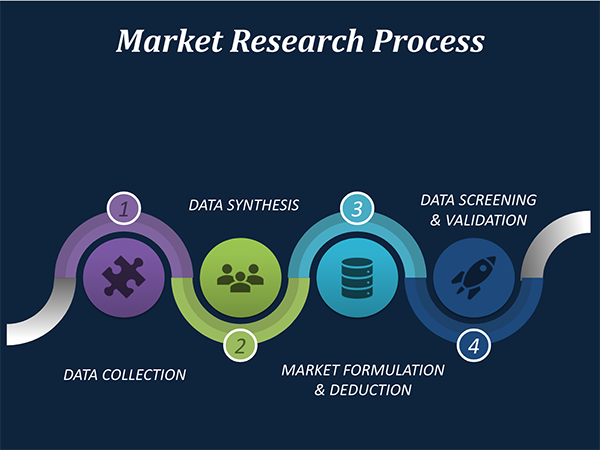
Data Collection: This stage of the market research process involves with the gathering and collecting of the market/industry related data from the sources. There are basically two types of research methods:
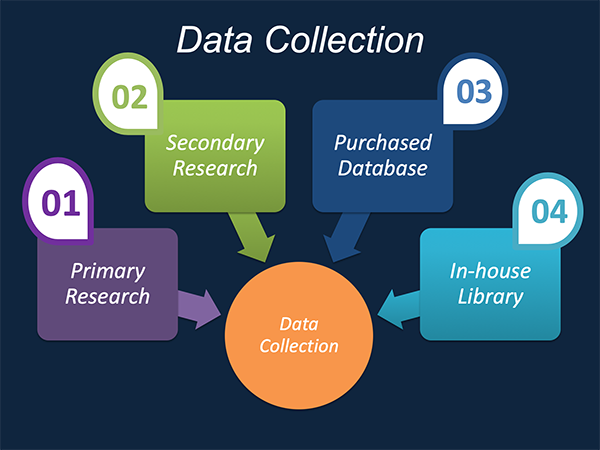
Data Synthesis: This stage includes the evaluation and assessment of all the data acquired from the primary and secondary research. It likewise includes in evaluating the information for any disparity watched while information gathering identified with the market. The data & information is gathered with consideration to the heterogeneity of sources. Scientific and statistical methods are implemented for synthesizing dissimilar information sets and provide the relevant data which is fundamental for formulating strategies. Our organization has broad involvement with information amalgamation where the information goes through different stages:
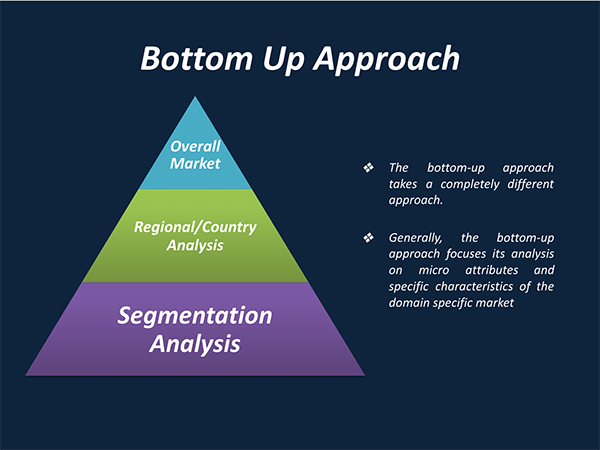
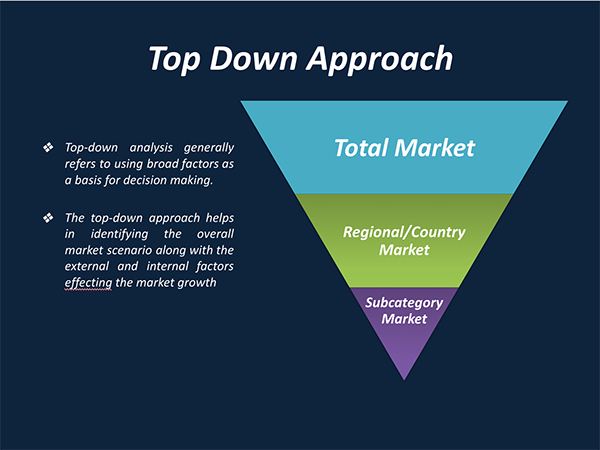
Market Formulation & Deduction: The last stage includes assigning the data & information in a suitable way in order to derive market size. Analyst reviews and domain based opinions based on holistic approach of market estimation combined with industry investigation additionally features a crucial role in this stage.
This stage includes with the finalization of the market size and numbers that we have gathered from primary and secondary research. With the data & information addition, we ensure that there is no gap in the market information. Market trend analysis is finished by our analysts by utilizing data extrapolation procedures, which give the most ideal figures to the market.
Data Validation: Validation is the most crucial step in the process. Validation & re-validation through scientifically designed technique and process that helps us finalize data-points to be used for final calculations. This stage also involves with the data triangulation process. Data triangulation generally implicates the cross validation and matching the data which has been collected from primary and secondary research methods.
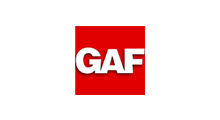

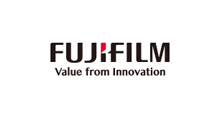
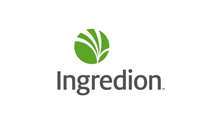

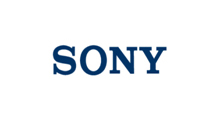
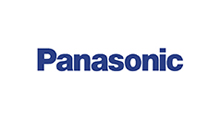
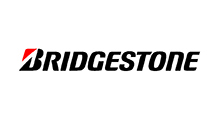
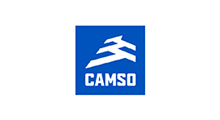
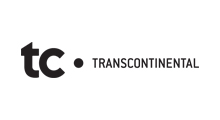
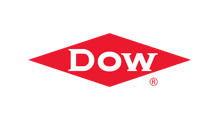
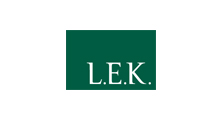

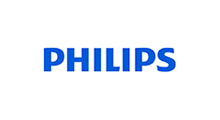
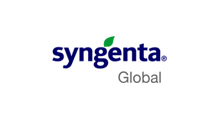
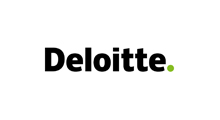

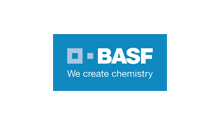
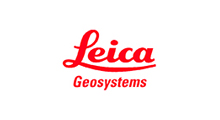
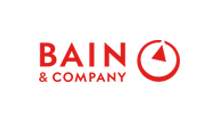
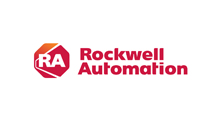
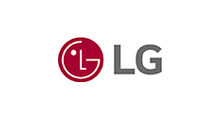
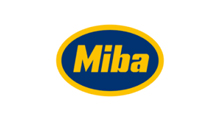
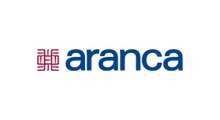
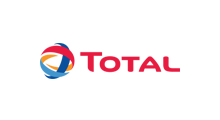
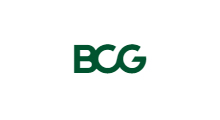
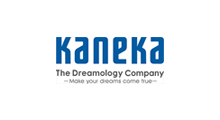
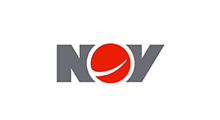
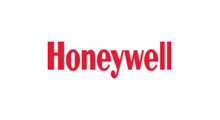
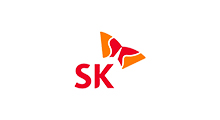
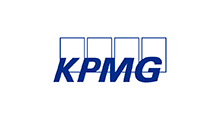
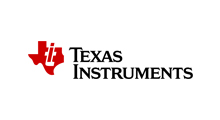
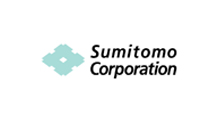
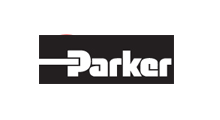
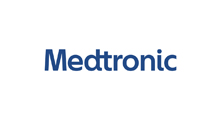
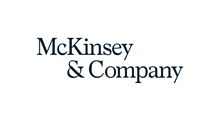


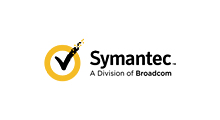
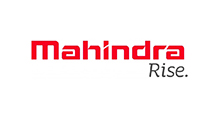
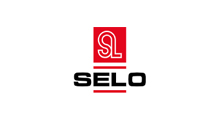
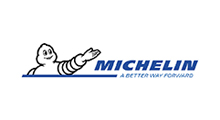

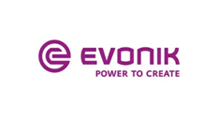

Free Customization
Countries can be added on demand
Free yearly update on purchase of Multi/Corporate User License
Companies served till date

We serve our customers 24x7 for 365 days through calls, emails and live chat options.
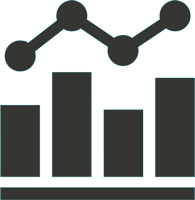
Huge database of exceptional market reports bringing market intelligence to your fingertips.

SSL enabled, we offer you various secured payment options for risk free purchase.